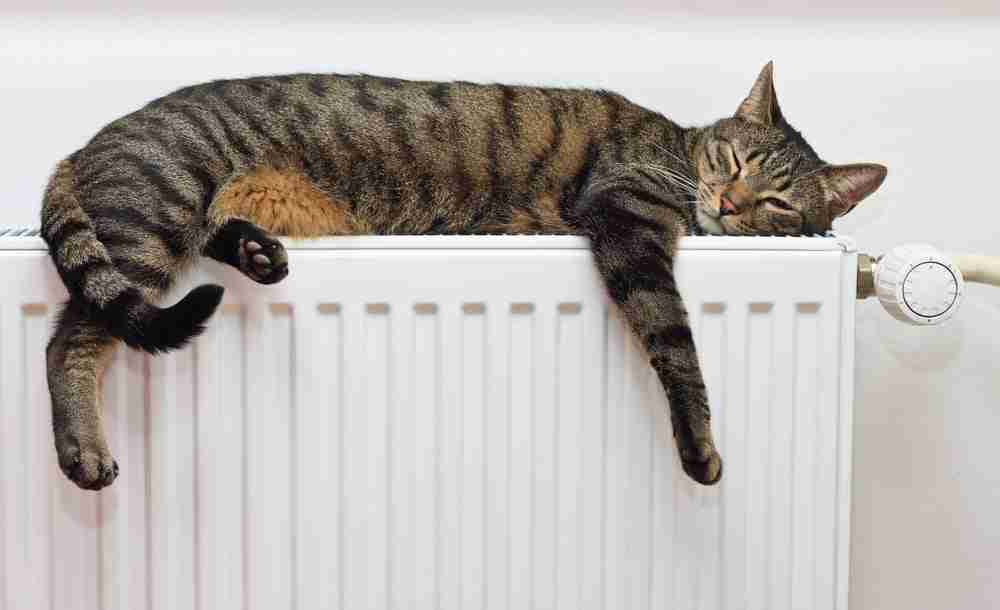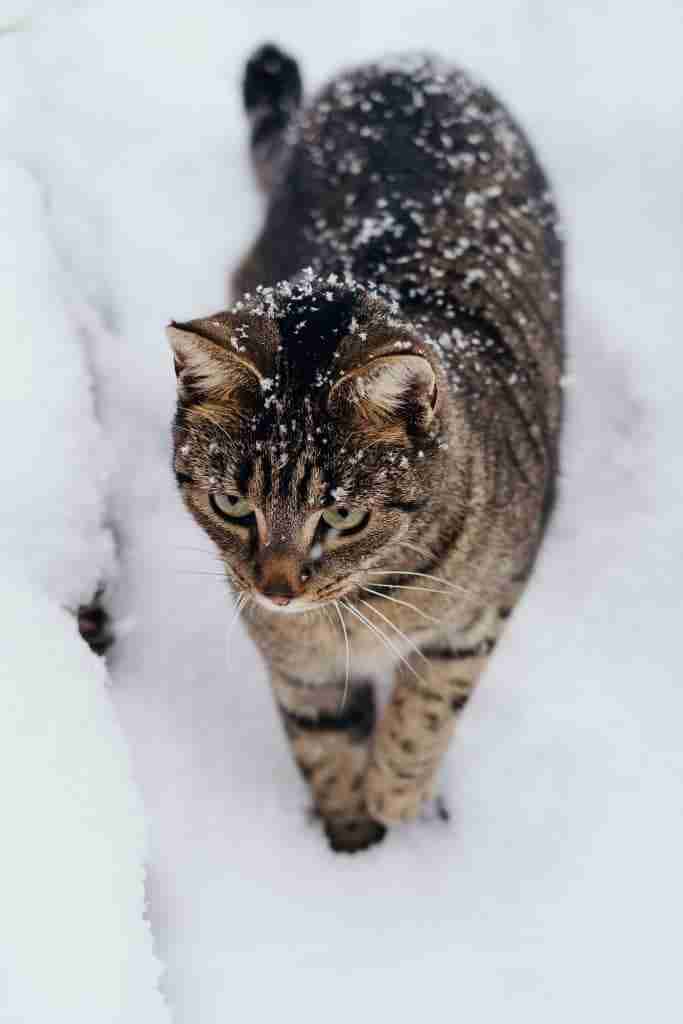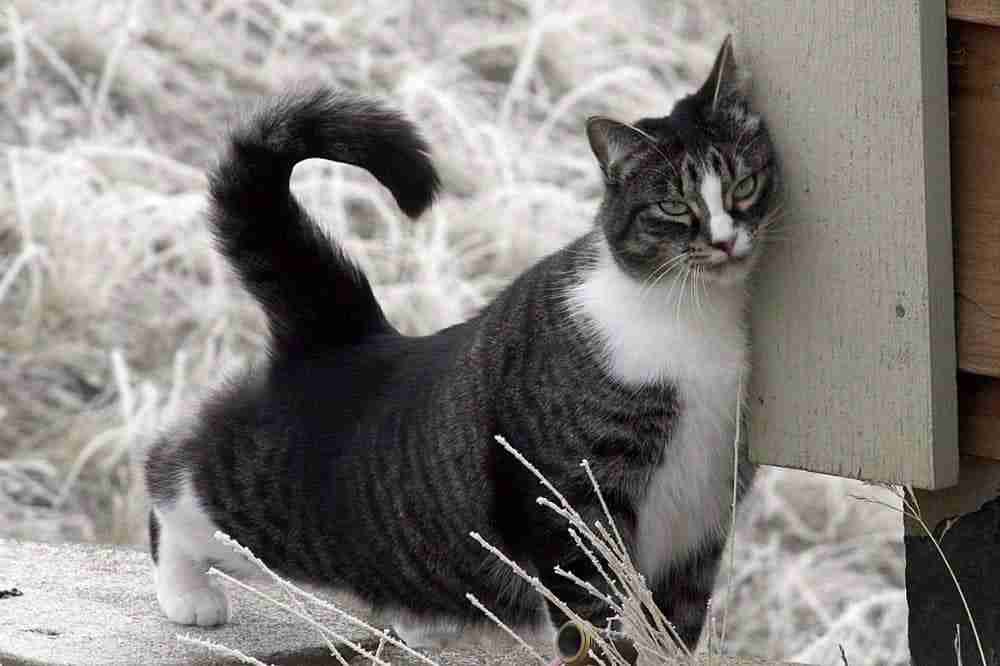Most cat owners don’t really consider that our cats might have a problem with cold temperatures. After all, cats have their own fur coats! It follows that they must be well equipped for cold weather and able to put up with some really nasty temperatures! So how cold is too cold for cats?
If you have a cat that spends time indoors and outdoors you tend not to worry as the cat decides for itself when it is too cold and retreats back indoors when the weather turns bad. So, with their fur coats and independent ability to come and go as they please what is the problem?

What Temperature Is Too Cold For Cats?
Despite their coats, cats are similar to us humans in that they can suffer hypothermia and frostbite. But, just like people, cats that are used to the outdoors and the temperature variation are often better acclimated to cold weather than indoor cats or cats that go out infrequently. Basically, your working barn cat is going to be able to get on with colder conditions better than your cosseted indoor kitty.
Having said all that, even your hard as nails outdoor cat is going to be poorly equipped to deal with freezing temperatures. How cold is too cold for cats? Temperatures below 32°F (0°C) are going to be deadly to a cat that doesn’t have adequate shelter just as it would be to a human exposed to such temperatures. Basically. If it’s too cold for you it is probably too cold for a cat!
Really anything less than 45°F (7°C) can be cold enough to develop hypothermia or to start suffering from exposure. If your barn cat or outdoor cat stays out below these sorts of temperatures you need to provide some shelter that can help them avoid getting wet, help stay out of cold winds and ultimately, avoid hypothermia.
How Do I Know If My Cat Is Cold?
So your cat has been out in the cold and you are not sure if your cat is feeling it bad?
Often exposed feet pads and ear tips can seem really cold after your cat has been out on a cold night. The lack of fur at these spots often makes these the spots that feel the coldest to touch. Generally, this is nothing too much to worry about. What you should be concerned about are the potential symptoms of hypothermia.

Hypothermia goes through three phases – mild, moderate and severe. Each phase relates to body temperature. A cat with a body temperature of 90 – 99°F is suffering from mild hypothermia. A body temperature of 82 – 90°F represents moderate hypothermia and body temperature below 82°F is severe hypothermia.
Lower body temperature is not the only symptom of hypothermia. You can also expect to see shivering, lack of mental alertness, muscle stiffness, shallow and slow breathing, low blood pressure and coma – all these symptoms become more pronounced with the severity of the hypothermia. At the most severe extreme, hypothermia is fatal.
Frostbite is another potential issue if your cat has been out in really freezing conditions for any length of time. Cats can end up getting frostbite that affects the toes, tail, and tips of the ears. Generally speaking, a cat who has hypothermia is the most likely to also be suffering from frostbite although the frostbite won’t become apparent until hours and days later after the exposure.
If you see any potential hypothermia symptoms then you know your cat is too cold.
How Can I Warm Up My Cat?

How can I warm up my cat? If your cat has been out in cold weather but does not seem to be suffering from any of the symptoms associated with hypothermia, just has cooler extremities, then warming them up should be easy.
A session of indoor play and some food should be enough to get the circulation going, burn some fuel and get warmed up relatively quickly. Like us, a cat will appreciate a warm position in the house if they have just come in from the cold.
What Should I Do If I Think My Cat Has Hypothermia?
If things are more serious than merely cold extremities following a patrol and you suspect hypothermia either from witnessing symptoms or by confirmation of body temperature you can take action at home to alleviate the situation -although cases of severe hypothermia are going to need veterinary help.
If you suspect your cat is suffering from mild hypothermia you can wrap the cat in blankets to preserve and gently raise their core temperature until they make a recovery.
If you suspect your cat has moderate hypothermia it is best to use an external heat source to help raise their core temperature. You might consider using a heat pad, hot water bottle or even sticking them in an oven on a very very low setting!
If your cat has severe hypothermia then you need vet help with this one. Sometimes the only way to get the core temperature up at this stage is to introduce warm water enema’s – not something you want to be attempting without supervision!

Tips For Keeping Outdoor Cats Safe In Cold Weather
Maybe you have a cat that likes going out and then sometimes is too “busy” to come back? Maybe you have barn cats that do a job outdoors. Maybe you have a local stray that needs a helping hand in the winter months.
The best way to keep these cats safe is to provide some sort of shelter as a minimum. Ideally, you want to provide a cat flap so they can access a building to keep warm but if this is not possible you should provide a shelter that can be placed in a barn, garage or even just left outdoors on a patio.
Such a shelter should be off the ground, fully enclosed with a small doorway opening, small enough that a cat can stand and turn in it but not so large that the cat’s own body heat can’t heat the shelter.
The shelter should preferably be lined with insulation material to prevent heat escaping and should be waterproof and windproof. It needs to have thick bedding and preferably positioned in a frost-free location. Think, small kennel structure lined with polystyrene sheets up on short stilts.
If you anticipate frost or ice then you should consider a shelter with an electrically heated bed. You want cat food bowls and water bowls that won’t freeze – plastic is often the best option on these. If you think you might get freezing weather then solar-powered heated bowls should be used.

How Cold Is Too Cold For Cats In A Garage?
Basically, if it is too cold for you to bed down then it is too cold for our feline friends! Garages tend to have concrete floors that conduct cold temperatures and can soon sap the heat out of a body.
If you want your cat to use your garage then provide a sheltered spot up off the floor. An upturned cardboard box with a blanket in it that is off the floor should be comfy enough. If possible buy a decent shelter off the net – you can always get an electrical heat pad specifically for the job if necessary.
Don’t just think because your cat is in the garage it will be fine – if the temperature drops below 45°F it can still get hypothermia!
Also, watch out for old antifreeze, oils, and the like – these can be highly poisonous to cats.
How Cold Is Too Cold For Barn Cats?
Same as any cat – freezing is dangerous and below 45°F, they are at risk of hypothermia. Often barn cats like to sleep in groups and sleep together for warmth, often off the ground and in a sheltered spot – but they are no less vulnerable to bad weather – just better at finding survivable spots!
They still need water and food that doesn’t freeze over and enough shelter to maintain their body heat.
